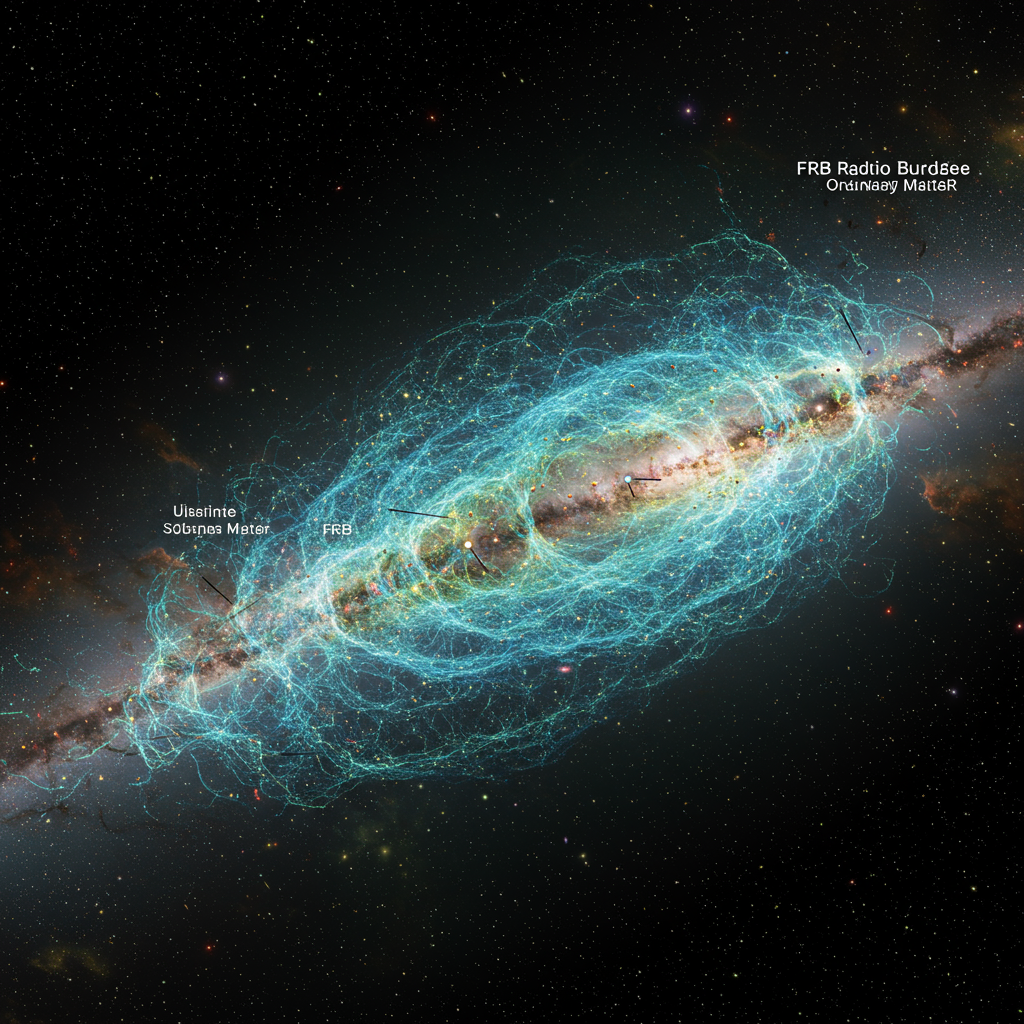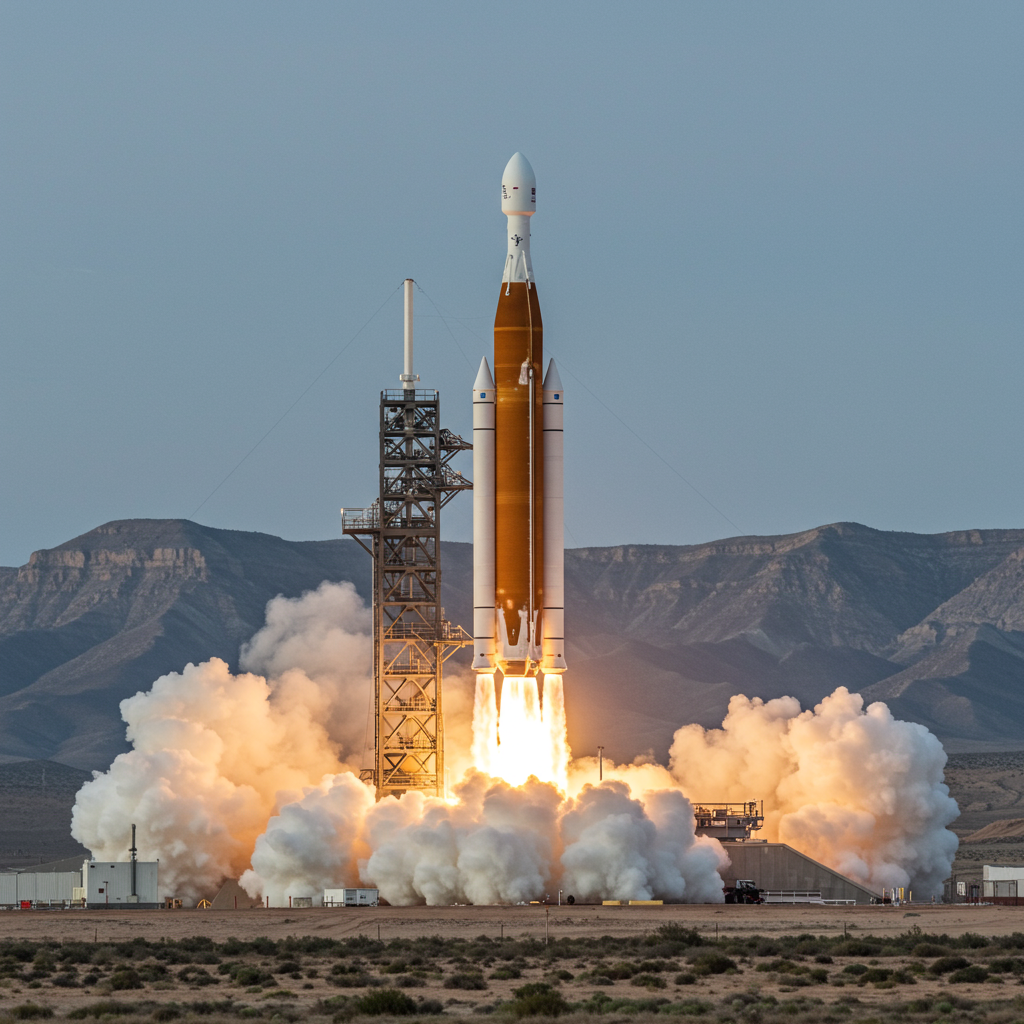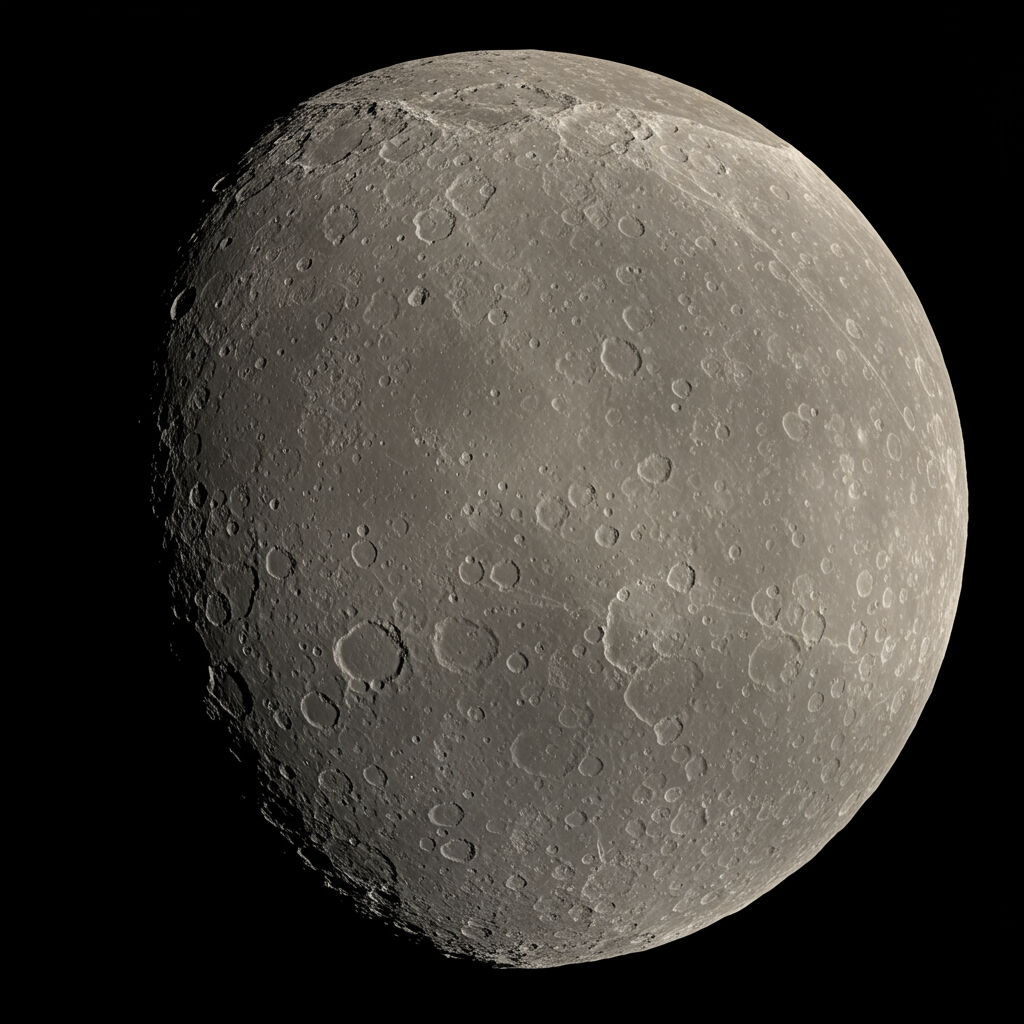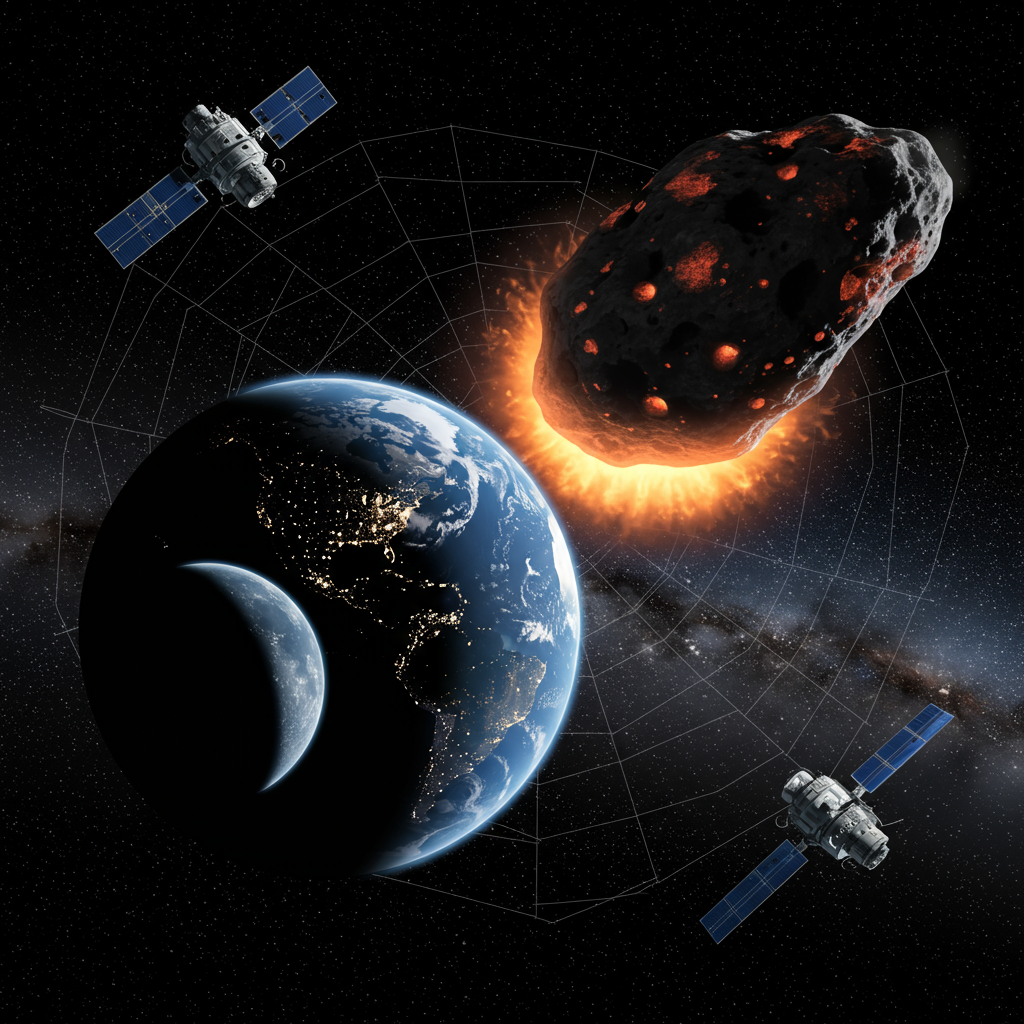For decades, astronomers have puzzled over a cosmic discrepancy: about half of the universe’s ordinary matter seemed to be missing. This wasn’t the enigmatic dark matter, which remains entirely invisible, but rather the everyday stuff made of atoms – the building blocks of stars, planets, and everything we see. This “missing” baryonic matter was theorized to exist, just too diffuse and dark to detect with traditional methods. Now, scientists have finally located it, thanks to powerful signals from across the cosmos called Fast Radio Bursts (FRBs).
By using FRBs as cosmic searchlights shining through the vast emptiness between galaxies, researchers have effectively “weighed” this elusive matter, confirming its location and distribution throughout the universe’s large-scale structure, often referred to as the cosmic web.
What Was the Missing Matter?
The universe is thought to be composed of about 85% dark matter and dark energy combined, leaving only about 15% as ordinary, or baryonic, matter. However, observations historically only accounted for roughly half of this expected ordinary matter. Scientists suspected this missing fraction was thinly spread across the immense space between galaxies in the intergalactic medium (IGM), existing as a hot, low-density gas. Its scattered nature made it incredibly difficult to observe directly using standard telescopes.
“The missing baryon problem was never about whether this matter existed, but simply where it was located,” explained lead author Liam Connor, a researcher at the Center for Astrophysics, Harvard & Smithsonian (CfA). Previous attempts using methods like X-ray observations or studying distant quasars yielded some clues but couldn’t fully close the gap.
FRBs: Illuminating the ‘Cosmic Fog’
The breakthrough came by leveraging Fast Radio Bursts. These brief, intense pulses of radio waves originate from distant galaxies, often lasting mere milliseconds, yet emitting incredible amounts of energy. While their exact origins remain a mystery, their utility as cosmological probes is now clear.
As an FRB travels billions of light-years through the intergalactic medium towards Earth, its radio waves interact with any matter they encounter, particularly free electrons in the diffuse gas. This interaction causes the different wavelengths within the radio signal to slow down by varying amounts, a phenomenon known as dispersion. It’s similar to how light passing through a prism splits into a rainbow; longer radio wavelengths are dispersed more than shorter ones.
By precisely measuring the degree of this dispersion – often referred to as the “dispersion measure” – astronomers can calculate the total amount of matter the FRB signal traveled through. Essentially, the stronger the dispersion, the more matter lies along the path.
As study co-author Vikram Ravi, an assistant professor at Caltech, put it, “The FRBs shine through the fog of the intergalactic medium, and by precisely measuring how the light slows down, we can weigh that fog, even when it’s too faint to see.” He added, “It’s like we’re seeing the shadow of all the baryons, with FRBs as the backlight.”
Pinpointing the Baryonic Census
The research team utilized data from 69 localized FRBs – bursts traced back to their specific home galaxies, allowing astronomers to know their distance. These FRBs originated from sources ranging from 11.7 million to an astounding 9.1 billion light-years away, including FRB 20230521B, the most distant FRB localized at the time of the study.
Data from these crucial bursts came from several key observatories around the world. Many were detected and localized by the Deep Synoptic Array (DSA) at Caltech’s Owens Valley Radio Observatory (OVRO) in California, a network specifically designed for FRB localization. Distances to the host galaxies were measured using instruments at the W. M. Keck Observatory in Hawaii and the Palomar Observatory in California. Other significant contributions came from the Australian Square Kilometre Array Pathfinder (ASKAP) in Western Australia.
By analyzing the dispersion patterns from these 69 FRBs, the scientists were able to create a detailed census of where the universe’s ordinary matter resides:
76% is located in the vast, diffuse intergalactic medium (IGM) – the space between galaxies, forming the structure of the cosmic web.
15% is found within the extensive, less dense gas halos surrounding galaxies.
- 9% is concentrated within the galaxies themselves, making up stars, gas, and dust.
- www.space.com
- www.caltech.edu
- cosmosmagazine.com
- <a href="https://www.spacedaily.com/reports/Acosmicmapemergesasastronomerstracemissingmattertointergalacticspace999.html”>www.spacedaily.com
- unn.ua
Confirming Predictions and Looking Ahead
This observed distribution of baryonic matter aligns remarkably well with predictions from advanced cosmological simulations of the universe’s evolution. This study provides the first direct observational evidence to support these theoretical models regarding the location of the previously unobserved baryonic matter.
The discovery not only resolves the long-standing mystery of the missing baryons but also provides insights into galaxy formation and evolution. While gravity pulls matter into galaxies, processes like supernovae and supermassive black holes are thought to expel gas back into the IGM – a feedback mechanism. The distribution found suggests this feedback process is efficient, pushing gas out of galaxies into the surrounding space.
The success of this research highlights the incredible potential of FRBs as powerful tools for probing the universe’s composition and structure. Researchers are optimistic about the future, anticipating a “golden age” for this field with upcoming radio telescopes like Caltech’s planned DSA-2000 and the Canadian Hydrogen Observatory and Radio-transient Detector (CHORD). These next-generation instruments are expected to detect and localize thousands more FRBs annually, enabling even more detailed mapping of the cosmic web and promising further breakthroughs in our understanding of the cosmos.
The findings were published on June 16 in the journal Nature Astronomy.




